
Sten Linnarsson
Division of Molecular Neurobiology, Department of Medical Biochemistry and Biophysics, Karolinska Institutet, Stockholm, Sweden.
Sten Linnarsson took his PhD in 2001, studying neurotrophic factors regulating neuronal survival, growth and plasticity. Instead of a postdoc, he founded a company to develop methods... more

Sten Linnarsson
Division of Molecular Neurobiology, Department of Medical Biochemistry and Biophysics, Karolinska Institutet, Stockholm, Sweden.
Sten Linnarsson took his PhD in 2001, studying neurotrophic factors regulating neuronal survival, growth and plasticity. Instead of a postdoc, he founded a company to develop methods for gene expression analysis and single-molecule DNA sequencing. In 2007, he was appointed assistant professor and in 2015 Professor of Molecular Systems Biology at Karolinska Institute. He was awarded the 2015 Erik K. Fernström Prize for his work in single-cell biology, and is a member of the European Molecular Biology Organization (EMBO), the Organizing Committee of the Human Cell Atlas initiative and the Nobel Assembly at Karolinska Institutet.
Since 2007, Linnarsson has pursued single-cell biology with the ultimate aim to discover the complete branching manifold of cell states in the developing human nervous system. To achieve this goal, his group pioneered single-cell RNA sequencing, RNA single-molecule FISH, and advanced computational methods.
In 2011, Linnarsson showed that cell types could be directly discovered and distinguished de novo, by unbiased sampling and sequencing of large numbers of single cells, without use of previously known markers, thus laying a conceptual foundation for the single-cell genomics field.
He has made important contributions to single-cell technology: unique molecular identifiers (UMIs) for accurate quantification; Patch-seq for combined electrophysiology, morphology and transcriptomics; RNA velocity to extract dynamic information from snapshot measurements, and more. In a series of recent papers he has used these methods to explore the mammalian brain, culminating in a complete single-cell atlas of the mouse nervous system in 2018 (adult) and 2021 (development).
http://linnarssonlab.org/
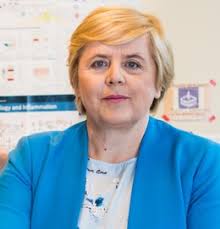
Bożena Kamińska-Kaczmarek
Laboratory of Molecular Neurobiology, Nencki Institute of Experimental Biology, Warsaw, Poland.
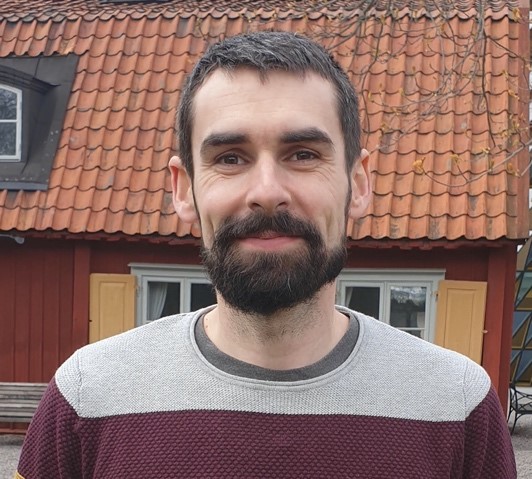
Marek Bartosovic
Department of Medical Biochemistry and Biophysics, Karolinska Institutet, Stockholm, Sweden
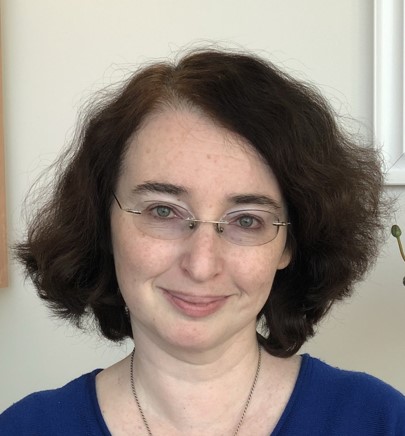
Agnieszka Rybak-Wolf
Berlin Institute for Medical Systems Biology (BIMSB), Max Delbrueck Center for Molecular Medicine (MDC), Berlin, Germany.

Bożena Kamińska-Kaczmarek
Laboratory of Molecular Neurobiology, Nencki Institute of Experimental Biology, Warsaw, Poland.
Bozena Kaminska graduated from the Faculty of Biology at the University of Warsaw in 1985, and obtained her PhD in biochemistry at the Nencki Institute of Experimental Biology of the Polish Academy of Sciences in 1991... more

Bożena Kamińska-Kaczmarek
Laboratory of Molecular Neurobiology, Nencki Institute of Experimental Biology, Warsaw, Poland.
Bozena Kaminska graduated from the Faculty of Biology at the University of Warsaw in 1985, and obtained her PhD in biochemistry at the Nencki Institute of Experimental Biology of the Polish Academy of Sciences in 1991. In 1997 she has obtained habilitation at this institution, and in 2003 become a full professor. Currently she is working at the Nencki Institute of Experimental Biology PAS in Warsaw, where she heads the Laboratory of Molecular Neurobiology. Since 2009 she is the director of the Postgraduate School of Molecular Medicine of the Medical University of Warsaw. In 2016 she was elected a corresponding member of the Polish Academy of Sciences.
Her international training encompasses a postdoctoral internship at the McGill University in Montreal, a visiting researcher at the Brain Research Institute at UCLA in Los Angeles and the visiting Nanshan Scholar professorship at the Medical University of Guangzhou.
She specializes in molecular neurobiology, neuro-oncology and tumor immunology. Through mechanistic understanding of the crosstalk between the immune system and tumor she aims to contribute to the design of novel immunomodulatory strategies to fight uncurable brain tumors. She has pioneered single-cell omics studies of brain tumor microenvironment. In her career, she was a principal investigator in 44 domestic and international research grants, including grants from the National Science Center (Maestro, Harmonia, Symphony, OPUS), National Center for Research and Development (Strategmed 1, 2, 3), Foundation for Polish Science (Master, Team-Tech Core Facility), a NATO grant, EU subsidies in two Framework Programs and ERANET grants. She promoted 27 doctors, 3 habilitated doctors and 10 Master students.
Her achievements include 147 scientific publications (e.g. in Nature Communications, Cell and PNAS) cited over 7,000 times (Hirsch index = 44) and 10 chapters in books.. Bozena Kaminska received a prestigious FNP Award in 2021.
https://www.nencki.edu.pl/pl/laboratories/pracownia-neurobiologii-molekularnej/
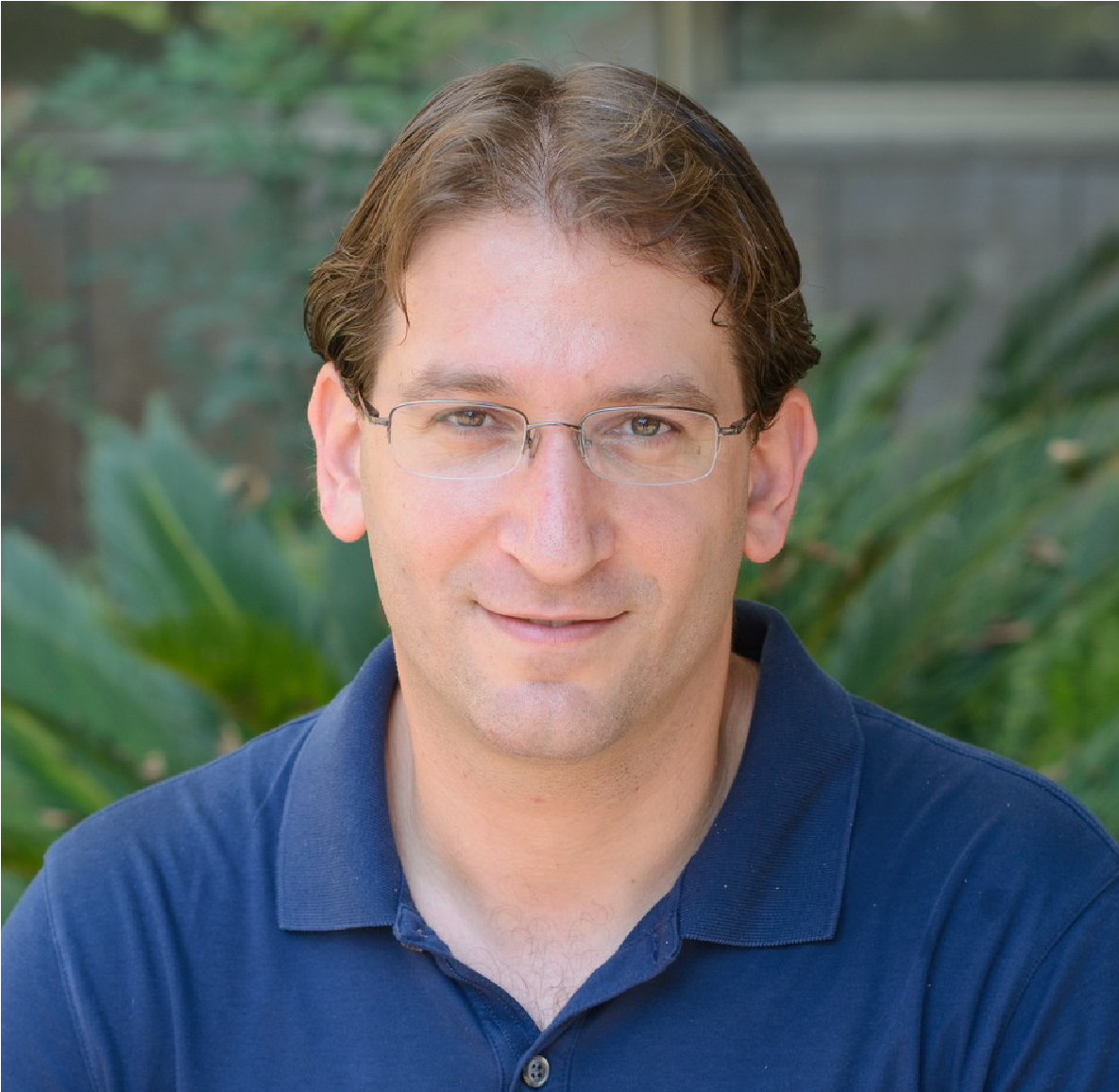
Sten Linnarsson
Division of Molecular Neurobiology, Department of Medical Biochemistry and Biophysics, Karolinska Institutet, Stockholm, Sweden.

Marek Bartosovic
Department of Medical Biochemistry and Biophysics, Karolinska Institutet, Stockholm, Sweden
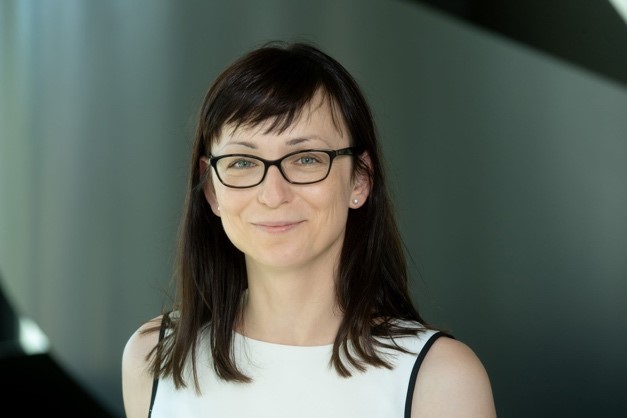
Agnieszka Rybak-Wolf
Berlin Institute for Medical Systems Biology (BIMSB), Max Delbrueck Center for Molecular Medicine (MDC), Berlin, Germany.

Marek Bartosovic
Department of Medical Biochemistry and Biophysics, Karolinska Institutet, Stockholm, Sweden
Dr. Marek Bartosovic studied biochemistry at the Comenius University in Bratislava, Slovakia. Then he did his PhD at the Masaryk University... more

Marek Bartosovic
Department of Medical Biochemistry and Biophysics, Karolinska Institutet, Stockholm, Sweden
Dr. Marek Bartosovic studied biochemistry at the Comenius University in Bratislava, Slovakia. Then he did his PhD at the Masaryk University in Brno, Czech Republic in the lab of Stepanka Vanacova where he investigated newly-emerging mRNA modifications such as m6A and processing of non-coding RNAs. In 2017 he joined the group of Goncalo Castelo-Branco at Karolinska Institute, where he studied the roles of epigenetics in the regulation of gene expression in the central nervous system. During his Marie-Sklodowska Curie Actions seal of excellence-funded project he developed the single-cell CUT&Tag technology on the 10x Genomics single-cell indexing platform and used it to profile histone modifications in the mouse brain at the single-cell level for the first time. Recently, he participated in development of spatial epigenome profiling technologies and he also developed a multimodal version of the single-cell CUT&Tag (nano-CT) technology that can profile three epigenetic modalities simultaneously in single cells. In September 2022, he started his independent lab at the Department of Biochemistry and Biophysics at the Stockholm University.
https://staff.ki.se/people/marek-bartosovic
Title
Multimodal profiling of the epigenome at single-cell resolution
Abstract
TBA

Bożena Kamińska-Kaczmarek
Laboratory of Molecular Neurobiology, Nencki Institute of Experimental Biology, Warsaw, Poland.

Agnieszka Rybak-Wolf
Berlin Institute for Medical Systems Biology (BIMSB), Max Delbrueck Center for Molecular Medicine (MDC), Berlin, Germany.
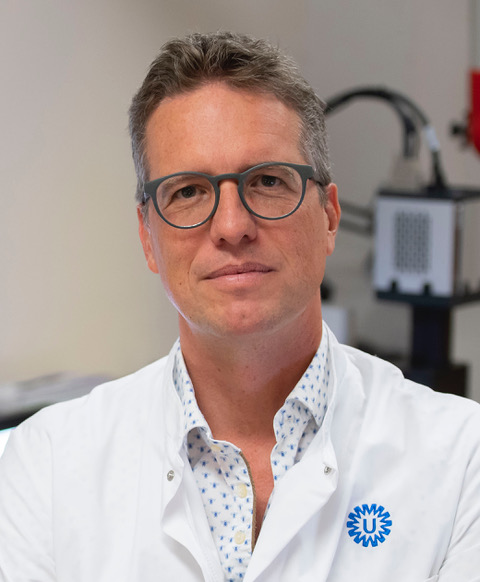
Jeroen Pasterkamp
Department of Translational Neuroscience, University Medical Center Utrecht, Utrecht, The Netherlands.

Agnieszka Rybak-Wolf
Berlin Institute for Medical Systems Biology (BIMSB), Max Delbrueck Center for Molecular Medicine (MDC), Berlin, Germany.
Dr. Rybak-Wolf focused her scientific career on post-transcriptional gene regulation driving neuronal differentiation and brain development. Regulatory RNAs such as miRNAs and circular RNA... more

Agnieszka Rybak-Wolf
Berlin Institute for Medical Systems Biology,
Dr. Rybak-Wolf focused her scientific career on post-transcriptional gene regulation driving neuronal differentiation and brain development. Regulatory RNAs such as miRNAs and circular RNA, their expression and function in the healthy and diseased mammalian nervous system are at the centre of her research interest. Currently as a head of organoid platform she is combining brain organoid models and single cell technologies to study human brain disorders.
https://www.mdc-berlin.de/organoids-platform

Marek Bartosovic
Department of Medical Biochemistry and Biophysics, Karolinska Institutet, Stockholm, Sweden

Jeroen Pasterkamp
Department of Translational Neuroscience, University Medical Center Utrecht, Utrecht, The Netherlands.

Hagen Tilgner
Brain and Mind Research Institute and Center for Neurogenetics, Weill Cornell Medicine, New York, USA

Jeroen Pasterkamp
Department of Translational Neuroscience, University Medical Center Utrecht, Utrecht, The Netherlands.
In 2000, Jeroen Pasterkamp obtained a PhD degree in Neuroscience in the Netherlands Institute for Neuroscience in Amsterdam. His PhD work focused... more

Jeroen Pasterkamp
Department of Translational Neuroscience, University Medical Center Utrecht, Utrecht, The Netherlands.
In 2000, Jeroen Pasterkamp obtained a PhD degree in Neuroscience in the Netherlands Institute for Neuroscience in Amsterdam. His PhD work focused on the role of repulsive guidance cues in axon regeneration. His postdoctoral work was performed in the laboratory of Alex Kolodkin (Johns Hopkins University School of Medicine, Baltimore, USA) and financially supported by NWO Talent and HFSP fellowships. These studies focused on novel functions and the downstream signaling pathways of axon guidance cues. In 2004, Jeroen moved to the UMC Utrecht Brain Center (Department of Translational Neuroscience, University Medical Center Utrecht, Utrecht, The Netherlands) to start his own lab focused on molecular mechanisms underlying Neural Circuit Development and Disease. Currently, he is professor of Translational Neuroscience and studies mechanisms underlying axonal development and disease. His lab focuses on 1) the molecular basis of neuronal subtype-specific circuit development and 2) mechanisms causing neurological disorders such as ALS and epilepsy, by studying a variety of molecular cues and an emphasis of different species of small and long non-coding RNAs. His lab uses a multidisciplinary research approach including induced pluripotent stem cell, brain organoids, microfluidics, genetic models, molecular cell biology, and 3D microscopy. He participates in different European consortia and is a recipient of TOP, VENI, VIDI, VICI and Gravitation grants from the Netherlands Organization for Scientific Research. Further, he serves on different committees and is a member of the (Scientific Advisory) Board of the Prinses Beatrix Spierfonds and Dutch Parkinson Scientists. He regularly organizes international meetings, including KNAW and EMBO symposia. He is founder and director of the MIND facility for iPSC, brain organoids and 3D microscopy, head of the department of Translational Neuroscience (UMC Utrecht)(www.translationalneuroscience.nl), and chair of the UMC Utrecht Brain Center.
https://jeroenpasterkamplab.com/
Title
Small and circular non-coding RNAs in neural development and neurological disease
Abstract
TBA

Agnieszka Rybak-Wolf
Berlin Institute for Medical Systems Biology (BIMSB), Max Delbrueck Center for Molecular Medicine (MDC), Berlin, Germany.

Hagen Tilgner
Brain and Mind Research Institute and Center for Neurogenetics, Weill Cornell Medicine, New York, USA
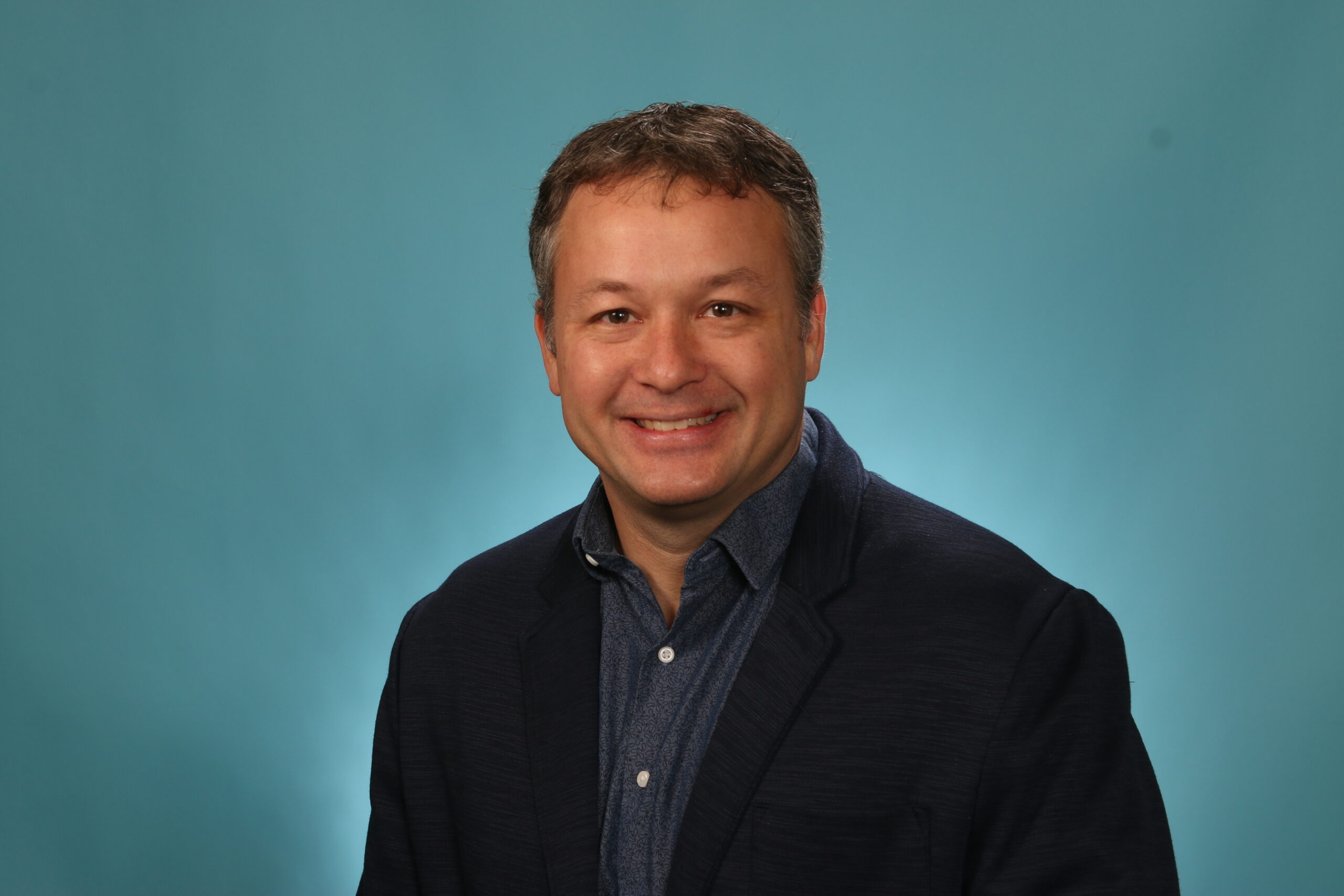
Joseph Dougherty
Department of Genetics & Department of Psychiatry, Washington University School of Medicine, St. Louis, MO, USA

Hagen Tilgner
Brain and Mind Research Institute and Center for Neurogenetics, Weill Cornell Medicine, New York, USA
Most mammalian genes encode multiple distinct RNA isoforms and the brain harbors especially diverse isoforms. Complex tissue, including the brain, often include highly divergent cell types and these... more

Hagen Tilgner
Brain and Mind Research Institute and Center for Neurogenetics, Weill Cornell Medicine, New York, USA.
Hagen Tilgner studied computer science in Germany and France, and after a brief stint in the UK, did his doctoral studies with Roderic Guigo at Centre for Genomic Regulation in Barcelona. There he focused on RNA and the co-transcriptionality of splicing (see Tilgner et al, Genome Res, 2012 for example). His postdoctoral work at Stanford with Michael Snyder focused on technology development, specifically for long-read transcriptomics (see for example Sharon*, Tilgner*, Grubert, Snyder, Nature Biotechnology, 2013 or Tilgner*, Jahanbani*, Nature Biotechnology, 2015). He started his lab at Weill Cornell in New York City in 2016 focusing on technologies to decipher the actions of RNA isoforms in the brain. The lab is a multi-disciplinary lab, including wet-lab technology development (see for example single-cell isoform RNA sequencing, ScISOr-Seq, Gupta*, Collier*, Nature Biotechnology, 2018 as well as single-nuclei isoform RNA sequencing, Hardwick*, Hu*, Joglekar* et al, Nature Biotechnology, 2022) and dry-lab approaches (see for example Joglekar et al, Nature Communications, 2021), where Maths/CS, molecular biology and neuroscience backgrounds interact to further our understanding of isoforms in healthy and diseased brain of humans and model organisms.
https://www.tilgnerlab.com/
Title
Brain isoforms in space and time
Abstract
Most mammalian genes encode multiple distinct RNA isoforms and the brain harbors especially diverse isoforms. Complex tissue, including the brain, often include highly divergent cell types and these cell types employ distinct isoforms for many genes. To untangle the distinct cell-type specific isoform profiles of the brain, we developed Single-cell isoform RNA sequencing (ScISOr-Seq1) for fresh tissues as well Single-nuclei isoform RNA sequencing (SnISOr-Seq2). To add spatial resolution, we developed Slide-isoform sequencing3. Collectively, these long-read approaches reveal a striking difference between coordinated pairs of exons with in-between exons (“Distant coordinated exons”) and without in-between exons (“Adjacent coordinated exons”): The former show strong enrichment for cell-type specific usage of exons, whereas the latter do not in mouse1 and human brain2. Of note, coordinated TSS-exon pairs and exon-polyA-site pairs follow the same trend as distant coordinated exon pairs2. Simultaneously, autism-associated exons are among the most highly variably used exons across cell types2. Differences in isoform expression between hippocampus and prefrontal cortex are most often explained by differences arising between the two regions in one specific cell type (e.g., excitatory neurons), but for a smaller program of genes brain regions can override cell-type identity3. Spatially barcoded isoform sequencing revealed that often region-specific isoform differences correlate with precise boundaries of brain structures (e.g., from the choroid plexus to the hippocampus). However, genes including Snap25 go against this trend, using a steady gradient of exon inclusion as one traverses the brain3. Moreover, choroid plexus epithelial cells show a dramatically distinct isoform profile, which originates from distinct exon and poly(A) site usage, but most strongly from distinct TSS usage3. Most recently, we have made advances in understanding the error sources of Pacific Biosciences and Oxford Nanopore long-read sequencing technologies4 and have implemented a highly accurate long-read interpretation pipeline5.
- Gupta*, Collier* et al, Nature Biotechnology, 2018
- Hardwick*, Hu*, Joglekar* et al, Nature Biotechnology, 2022
- Joglekar et al, Nature Communications, 2021
- Mikheenko*, Prjibelski*, Genome Research, 2022
- Prjibelski et al, https://assets.researchsquare.com/files/rs-1571850/v1_covered.pdf

Jeroen Pasterkamp
Department of Translational Neuroscience, University Medical Center Utrecht, Utrecht, The Netherlands.

Joseph Dougherty
Department of Genetics & Department of Psychiatry, Washington University School of Medicine, St. Louis, MO, USA
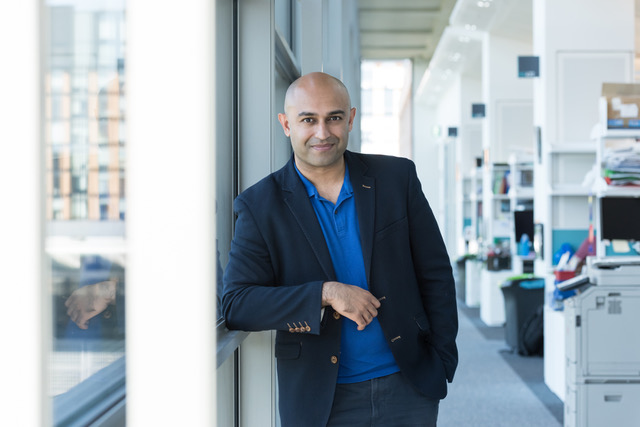
Rickie Patani
Department of Neuromuscular Diseases, UCL Queen Square Institute of Neurology, London, UK

Joseph Dougherty
Department of Genetics & Department of Psychiatry, Washington University School of Medicine, St. Louis, MO, USA
I have built a team with a unique technical expertise, applying high-throughput molecular and behavioral analysis to identify cellular and molecular... more

Joseph Dougherty
Department of Genetics & Department of Psychiatry, Washington University School of Medicine, St. Louis, MO, USA
I have built a team with a unique technical expertise, applying high-throughput molecular and behavioral analysis to identify cellular and molecular mechanisms of neurological disease. I have extensive experience in high throughput methodologies for transcript profiling and analysis of glia in vivo and in vitro. This includes developing and applying analytical methods for high-throughput in vivo studies of genetically defined cell types in mice, and applying this to a broad survey of translational profiles across dozens of cell types in the CNS. Technically our lab is well equipped for generation and characterization of additional mouse genetic reagents, including TRAP (Translating Ribosome Affinity Purification) mouse lines. Using this and related methods, I have conducted extensive experiments profiling different cell types, optimization of protocols for working with small amounts of RNA, and development of analytical pipelines. We’ve also carried out extensive tool development for molecular neuroscience with a focus on assays for cell type specific transcription and translation. We couple human molecular genetic analysis with these various approaches to advance the study of neurological disease. We focus most often on modeling in mice the disruptions of transcriptional and translational regulators discovered by human psychiatric genetics. This includes studies using TRAPseq, CLIPseq, and Ribosome Footprinting for molecular work, and a wide variety of behavioral analyses. Our interest in new technologies for studying translation regulation in glia had led us to discovery of a new biological phenomena – local translation in astrocytes, which has been an area of continued passion in our research ever sense. While there are many teams studying this phenomenon in neurons, I am excited here to have the opportunity to present a project defining translation regulation in glia.
http://genetics.wustl.edu/jdlab/
Title
Regulation of translation in glia
Abstract

Hagen Tilgner
Brain and Mind Research Institute and Center for Neurogenetics, Weill Cornell Medicine, New York, USA

Rickie Patani
Department of Neuromuscular Diseases, UCL Queen Square Institute of Neurology, London, UK
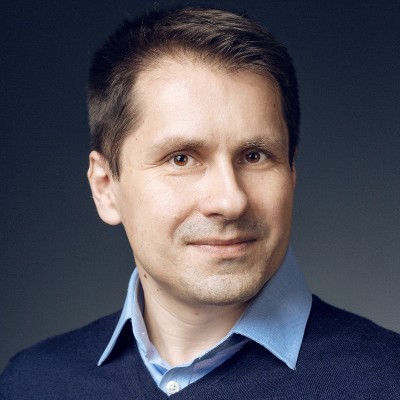
Gracjan Michlewski
Laboratory of RNA-Protein Interactions - Dioscuri Centre, International Institute of Molecular and Cell Biology, Warsaw, Poland.

Rickie Patani
Department of Neuromuscular Diseases, UCL Queen Square Institute of Neurology, London, UK
Professor Rickie Patani is a physician scientist with over a decade of direct experience working on human induced pluripotent stem cell models of neurodegeneration. more

Rickie Patani
The Francis Crick Institute, UK
Professor Rickie Patani is a physician scientist with over a decade of direct experience working on human induced pluripotent stem cell models of neurodegeneration. Rickie obtained his BSc (in Cellular and Molecular Neuroscience) and MBBS from Imperial College London in 2004. He gained MRCP in 2007 and a PhD in Human Stem Cell Neurobiology from Cambridge University in 2011, funded by a Wellcome Trust Clinical Research Fellowship. While completing his higher clinical training in Neurology, he was awarded a Wellcome Trust Clinician Scientist Fellowship and started his research group at UCL Queen Square Institute of Neurology in 2013. Rickie gained MRCP (Neurology) in 2015 and was appointed Honorary Consultant Neurologist at the National Hospital for Neurology and Neurosurgery, Queen Square in 2017. Rickie's lab moved to the Francis Crick Institute in 2017, where they continue to work primarily on human induced pluripotent stem cell models of neurodegeneration, with particular focus on the themes of RNA metabolism and cellular autonomy. In 2018, Rickie was elected Fellow of the Royal College of Physicians and secured an MRC Senior Clinical Fellowship. Rickie was promoted to Associate Professor in 2018 and subsequently full Professor in 2019. Rickie has been awarded several prizes for his group’s research including the Brain Sciences Young Investigator Award, the International 3Rs Prize, the International Paulo Gontijo Prize in Medicine, the Graham Bull Prize and Goulstonian Lectureship from the Royal College of Physicians, and the Lister Research Prize. Rickie currently serves on the MRC Neuroscience and Mental Health panel, the MRC Training and Careers Strategy Board and the MND Association funding panel. The Patani Lab have a diverse portfolio of public engagement activities (see the group's twitter account @PataniLab for more information).
https://www.crick.ac.uk/research/find-a-researcher/rickie-patani
Title
Deciphering cell type specific molecular aberrations in ALS using human stem cell models
Abstract
TBA

Joseph Dougherty
Department of Genetics & Department of Psychiatry, Washington University School of Medicine, St. Louis, MO, USA

Gracjan Michlewski
Laboratory of RNA-Protein Interactions - Dioscuri Centre, International Institute of Molecular and Cell Biology, Warsaw, Poland.
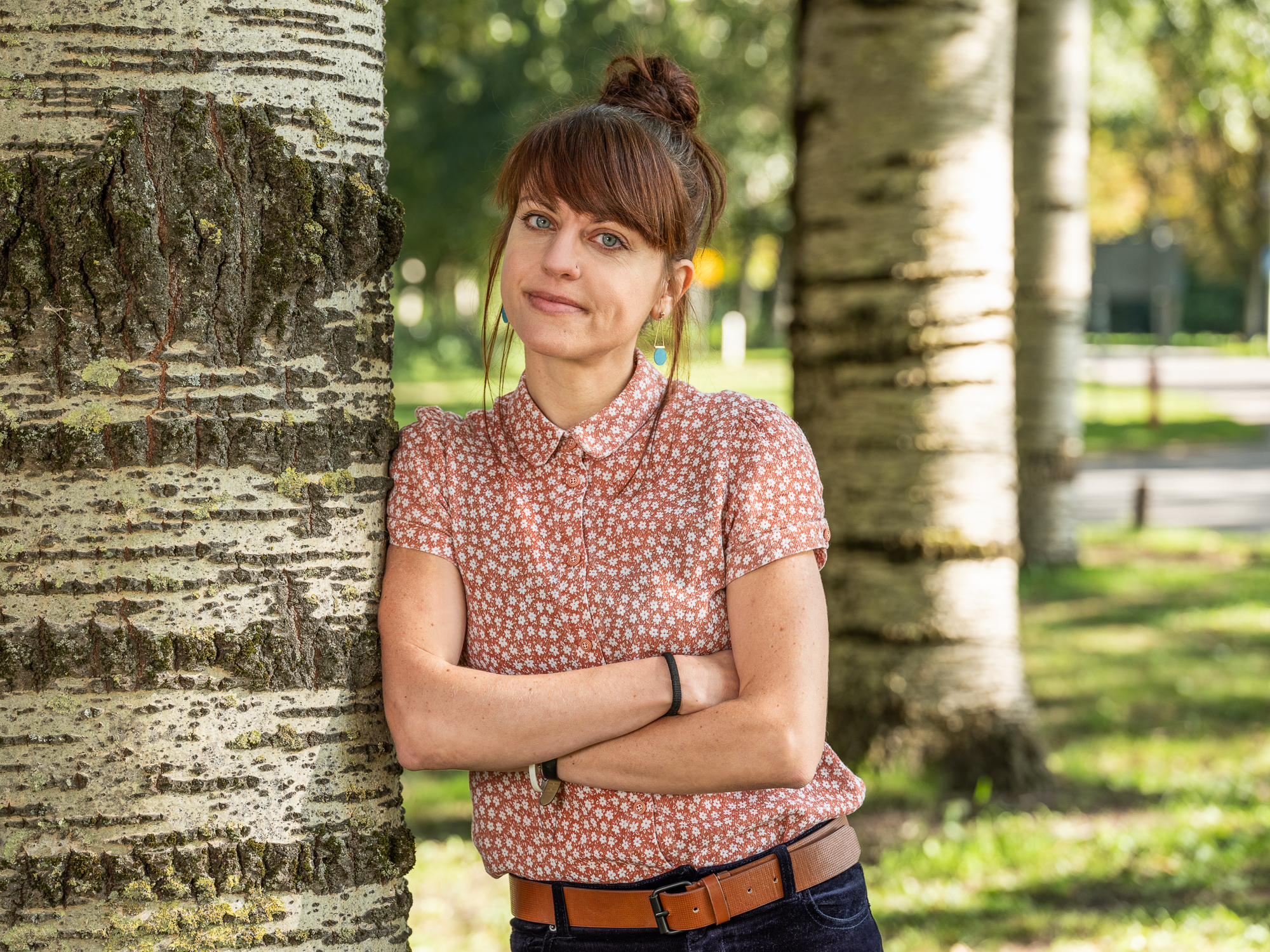
Evgenia Salta
Laboratory of Neurogenesis and Neurodegeneration, Netherlands Institute for Neuroscience, Amsterdam, the Netherlands.

Gracjan Michlewski
Laboratory of RNA-Protein Interactions - Dioscuri Centre, International Institute of Molecular and Cell Biology, Warsaw, Poland.
I graduated from the Adam Mickiewicz University in Poznan. I obtained my PhD and Habilitation from the Institute of Bioorganic Chemistry, Polish Academy of Sciences in Poznan. I have... more

Gracjan Michlewski
Laboratory of RNA-Protein Interactions - Dioscuri Centre, International Institute of Molecular and Cell Biology, Warsaw, Poland.
I graduated from the Adam Mickiewicz University in Poznan. I obtained my PhD and Habilitation from the Institute of Bioorganic Chemistry, Polish Academy of Sciences in Poznan. I have been a postdoctoral fellow in the Human Genetics Unit, Medical Research Council in Edinburgh, UK. In 2011, I established my laboratory at The Wellcome Trust Centre for Cell Biology, University of Edinburgh with Medical Research Council Career Development Award. In 2018 I was appointed Senior Lecturer and in 2020 Reader at The University of Edinburgh. In 2021 I became a Professor, and I am leading a Dioscuri Centre for RNA-Protein Interactions in Human Health and Disease at the International Institute of Molecular and Cell Biology in Warsaw.
Throughout my career, I have studied various aspects of RNA biology in eukaryotic cells. My biggest discoveries include identification of conserved elements in the miRNA precursors and auxiliary cofactors that regulate biogenesis of neuronal and non-neuronal miRNAs. My overall goal is to use multidisciplinary approach to study the links between RNA biology and human diseases.
https://www.iimcb.gov.pl/en/research/laboratories/46-laboratory-of-rna-protein-interactions-dioscuri-centre-michlewski-laboratory

Rickie Patani
Department of Neuromuscular Diseases, UCL Queen Square Institute of Neurology, London, UK

Evgenia Salta
Laboratory of Neurogenesis and Neurodegeneration, Netherlands Institute for Neuroscience, Amsterdam, the Netherlands.

Anna Krichevsky
Center for Neurologic Diseases, Brigham and Women's Hospital and Harvard Medical School, Boston, Massachusetts, USA.

Evgenia Salta
Laboratory of Neurogenesis and Neurodegeneration, Netherlands Institute for Neuroscience, Amsterdam, the Netherlands.
I studied Pharmacy at the Aristotle University of Thessaloniki, Greece, where I also did my PhD studying Transmissible Spongiform Encephalopathies. I then joined... more

Evgenia Salta
Laboratory of Neurogenesis and Neurodegeneration, Netherlands Institute for Neuroscience, Amsterdam, the Netherlands.
I studied Pharmacy at the Aristotle University of Thessaloniki, Greece, where I also did my PhD studying Transmissible Spongiform Encephalopathies. I then joined the lab of Bart De Strooper at KULeuven-VIB, Belgium, as a postdoctoral fellow to explore the role of microRNAs in Alzheimer’s disease. As a Staff Scientist in the lab of Bart De Strooper, I focused my research on the relevance of adult neurogenesis in the context of Alzheimer’s. In July 2020, I moved to the Netherlands to join the Netherlands Institute for Neuroscience as an independent Group Leader. My group studies the complex protein-coding and non-coding regulatory determinants of adult hippocampal neurogenesis in neurodegeneration.
https://nin.nl/research/researchgroups/salta-group/

Gracjan Michlewski
Laboratory of RNA-Protein Interactions - Dioscuri Centre, International Institute of Molecular and Cell Biology, Warsaw, Poland.

Anna Krichevsky
Center for Neurologic Diseases, Brigham and Women's Hospital and Harvard Medical School, Boston, Massachusetts, USA.


Anna Krichevsky
Center for Neurologic Diseases, Brigham and Women's Hospital and Harvard Medical School, Boston, Massachusetts, USA.
Dr. Anna Krichevsky received her Ph.D. degree from the Hebrew University of Jerusalem, Israel, and completed postdoctoral training at Harvard Medical School in Boston... more

Anna Krichevsky
Center for Neurologic Diseases, Brigham and Women's Hospital and Harvard Medical School, Boston, Massachusetts, USA
Dr. Anna Krichevsky received her Ph.D. degree from the Hebrew University of Jerusalem, Israel, and completed postdoctoral training at Harvard Medical School in Boston. As a postdoctoral fellow, she isolated neuronal RNA granules and pioneered the work that led to the recognition of microRNA functions and RNA interference mechanisms in brain physiology and pathology. She performed the first successful RNA interference in mammalian neurons; contributed to identifying miRNAs in the mammalian brain; developed the first high-throughput arrays for miRNA expression profiling; discovered one of the first oncogenic miRNAs, miR-21, which is currently a promising target for various human diseases. Krichevsky’s laboratory discovered critical miRNAs involved in brain tumors and neurodegenerative disorders such as Alzheimer’s disease and multiple sclerosis. Her laboratory also pioneered the identification of miRNA biomarkers for diagnostics and monitoring of primary and metastatic brain tumors. More recently, her work expanded to other classes of regulatory ncRNAs such as enhancer- and promoter-associated RNAs and their roles in gene expression and genome architecture in the brain and neuropathology. Dr. Krichevsky received numerous awards and honors, including the Sontag Distinguished Scientist Award. Overall, Dr. Krichevsky’s work is geared towards RNA medicine and is based on multiple collaborations. She also serves on the Executive Committee of the HMS Initiative for RNA Medicine, established to translate RNA research to clinical practice
https://krichevskylab.bwh.harvard.edu/

Evgenia Salta
Laboratory of Neurogenesis and Neurodegeneration, Netherlands Institute for Neuroscience, Amsterdam, the Netherlands.

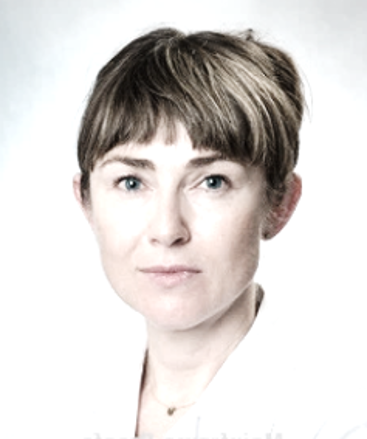
Agnieszka Bronisz
Tumor Microenvironment Laboratory, Mossakowski Medical Research Centre, Polish Academy of Sciences, Warsaw, Poland

Itay Tirosh
Department of Molecular Cell Biology, Weizmann Institute of Science, Israel.
Itay Tirosh obtained his PhD from the Weizmann Institute of Science in the area of computational biology. From 2012 to 2017 he was a postdoctoral fellow... more

Itay Tirosh
Department of Molecular Cell Biology, Weizmann Institute of Science, Israel.
Itay Tirosh obtained his PhD from the Weizmann Institute of Science in the area of computational biology. From 2012 to 2017 he was a postdoctoral fellow at the Regev and Golub labs at the Broad Institute of MIT and Harvard, and since August 2017 he is a Senior Scientist at the Weizmann Institute of Science. The Tirosh lab is combining computational approaches and experimental single cell methods to understand the diversity of cells within human tumors, with a focus on glioma.
https://www.weizmann.ac.il/mcb/tirosh/home

Anna Krichevsky
Center for Neurologic Diseases, Brigham and Women's Hospital and Harvard Medical School, Boston, Massachusetts, USA.

Agnieszka Bronisz
Tumor Microenvironment Laboratory, Mossakowski Medical Research Centre, Polish Academy of Sciences, Warsaw, Poland
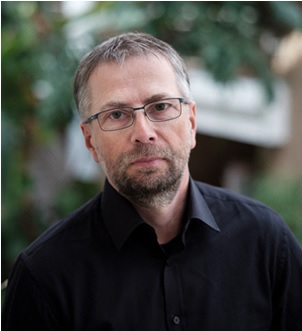
Krzysztof Sobczak
Institute of Molecular Biology and Biotechnology, Adam Mickiewicz University, Poznań, Poland.

Agnieszka Bronisz
Tumor Microenvironment Laboratory, Mossakowski Medical Research Centre, Polish Academy of Sciences, Warsaw, Poland
Dr. Agnieszka Bronisz is a Mossakowski Medical Research Institute (MMRI) professor in Warsaw, Poland. She earned her Ph.D. in more

Agnieszka Bronisz
Tumor Microenvironment Laboratory, Mossakowski Medical Research Centre, Polish Academy of Sciences, Warsaw, Poland
Dr. Agnieszka Bronisz is a Mossakowski Medical Research Institute (MMRI) professor in Warsaw, Poland. She earned her Ph.D. in medical science specializing in molecular neuropathology from the MMRI in 2001. Subsequently, she conducted post-doctoral training in biochemistry at the Texas A&M University, Temple, TX, USA, and genetics at The Ohio State University Medical Center, Columbus, OH, USA (OSUMC). In 2008 she became a faculty member of OSUMC and developed her project in cancer research. In 2012 she joined the Department of Neurosurgery as a faculty at Brigham and Women's Hospital and Harvard Medical School, Boston, USA (BWH/HMS), where she established her research group to study the cellular and extracellular effectors of cancer heterogeneity. In 2019 she relocated to MMRI to lead the Tumor Microenvironment Laboratory.
Research interests: secretome, exosome, RNAome.
https://www.imdik.pan.pl/pl/pracownie-badawcze/401-pracownia-mikrosrodowiska-nowotworow
Title:
Molecular geography of the stress response in the brain tumor glioblastoma - the lesson from transcriptome signatures.
Abstract:
TBA


Krzysztof Sobczak
Institute of Molecular Biology and Biotechnology, Adam Mickiewicz University, Poznań, Poland.
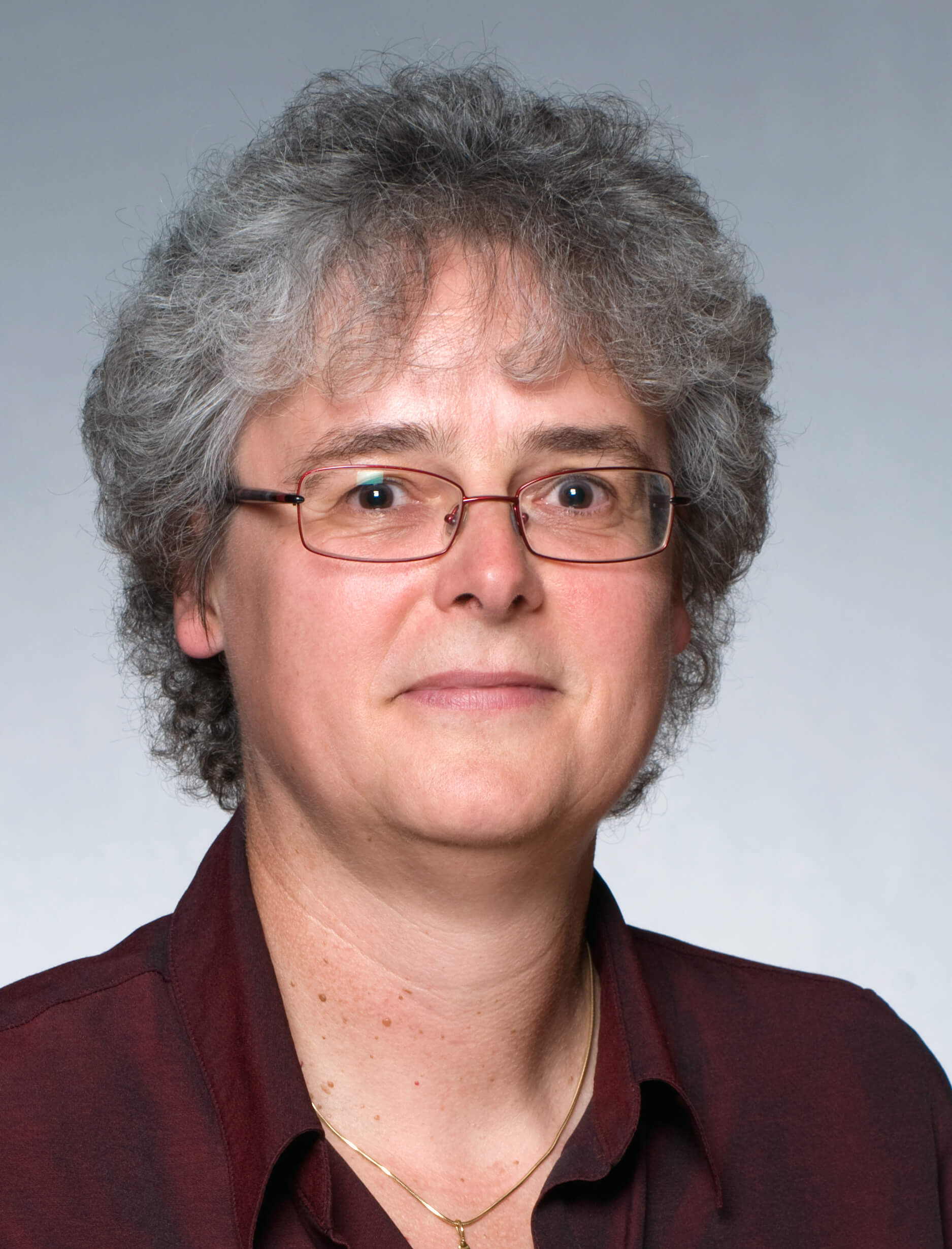
Nicole Deglon
Neuroscience Research Center and Department of Clinical Neuroscience, Hospital and University of Lausanne, Lausanne, Switzerland.

Krzysztof Sobczak
Institute of Molecular Biology and Biotechnology, Adam Mickiewicz University, Poznań, Poland.
Krzysztof Sobczak – professor of Adam Mickiewicz University (AMU) in Poznan (Poland). He got PhD degree and postdoctoral degree in chemistry from the Institute of Bioorganic Chemistry... more

Krzysztof Sobczak
Institute of Molecular Biology and Biotechnology, Adam Mickiewicz University Poznań
Krzysztof Sobczak – professor of Adam Mickiewicz University (AMU) in Poznan (Poland). He got PhD degree and postdoctoral degree in chemistry from the Institute of Bioorganic Chemistry PAS. He was awarded the title of professor of biology in 2019. Since 2019, he is the director of the Institute of Molecular Biology and Biotechnology of AMU. In 2005-2009 he completed a postdoctoral fellowship at the University of Rochester (USA). In 2010, he founded a new research group, whose interests focus on the elucidation of the molecular pathomechanisms of human genetic diseases caused by the expansion of trinucleotide repeats and the development of therapeutic strategies targeting mutant RNA. He is the author of over 70 original articles which were cited ~4,000 times (ORCID: 0000-0001-8352-9812).
http://ibmib.amu.edu.pl/en/department-of-gene-expression/laboratory-of-gene-therapy/
Title:
Compounds which alleviate the pleiotropic toxicity of RNA harboring expanded CGG repeats in the Fragile X–associated syndrome
Abstract:
Fragile X-associated tremor/ataxia syndrome (FXTAS) is an incurable neurodegenerative disorder caused by expansion of CGG repeats in the FMR1 5'UTR. The RNA containing expanded CGG repeats (rCGGexp) causes cell damage by interaction with complementary DNA, forming R-loop structures, sequestration of nuclear proteins involved in RNA metabolism and initiation of noncanonical translation of polyglycine-containing protein (FMRpolyG), which forms nuclear insoluble inclusions. During the lecture we will discuss the therapeutic potential of short antisense oligonucleotide steric blockers (ASOs) and small compounds targeting directly the rCGGexp. In nuclei of FXTAS cells ASOs affect R-loop formation and correct miRNA biogenesis and alternative splicing, indicating that nuclear proteins are released from toxic sequestration. In cytoplasm, ASOs significantly decrease the biosynthesis and accumulation of FMRpolyG. Delivery of ASO into a brain of FXTAS mouse model reduces formation of inclusions, improves motor behavior and corrects gene expression profile with marginal signs of toxicity after a few weeks from a treatment. We also identified small compounds, CMBLs, which bind to RNA structure formed by rCGGexp and attenuates translation of toxic FMRpolyG and formation of nuclear inclusions in FXTAS cells. Our results indicate that CMBL4c can reduce FMRpolyG-mediated cytotoxicity and apoptosis. Importantly, its therapeutic potential is also observed once the inclusions are already formed.

Agnieszka Bronisz
Tumor Microenvironment Laboratory, Mossakowski Medical Research Centre, Polish Academy of Sciences, Warsaw, Poland

Nicole Deglon
Neuroscience Research Center and Department of Clinical Neuroscience, Hospital and University of Lausanne, Lausanne, Switzerland.
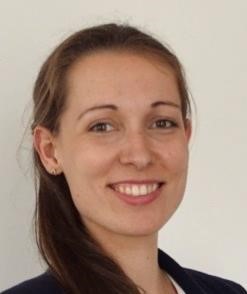

Nicole Deglon
Neuroscience Research Center and Department of Clinical Neuroscience, Hospital and University of Lausanne, Lausanne, Switzerland.
Prof. Déglon received her education, including a PhD in Biochemistry, at the University of Lausanne, Switzerland. She held several research positions at the Gene Therapy Center in Lausanne... more

Nicole Deglon
Neuroscience Research Center and Department of Clinical Neuroscience, Hospital and University of Lausanne, Lausanne, Switzerland.
Prof. Déglon received her education, including a PhD in Biochemistry, at the University of
Lausanne, Switzerland. She held several research positions at the Gene Therapy Center in
Lausanne, at the SALK Institute in San Diego, California, at the Federal Polytechnic
Institute of Lausanne, Switzerland and finally as Deputy Director of MIRCen, a
pre-clinical imaging platform for drug, cell and gene therapy from the French Atomic
Energy Commission (CEA).
She is presently Professor at the Department of Clinical Neurosciences at the Lausanne
University Hospital.
In 1997, she was one of the first scientists to adopt this powerful gene transfer
technology with lentiviral vectors for neurotrophic factor delivery to the brain. Papers
in this new research line have opened entirely new possibilities for efficient, long-term
delivery of therapeutic genes in rodent and primate models of neurodegenerative diseases.
Prof. Déglon has also played a pioneer role in the modeling of CNS neurodegeneration by
overexpressing disease-causing proteins with viral vectors. In 1992, she has developed
lentiviral-mediated RNA interference and is one of the top experts in design and
applications of siRNA sequences to silence dominant toxic genes implicated in neurological
disorders (Huntington’s Disease and Spinocerebellar Ataxia type 3). The development of
gene editing with CRISPR/Cas9 system has opened new opportunities for the modelling and
treatment of CNS pathologies.
https://www.unil.ch/crn/en/home/menuinst/research-labs/cellular-and-molecular-neurotherapies/nicole-deglon.html

Krzysztof Sobczak
Institute of Molecular Biology and Biotechnology, Adam Mickiewicz University, Poznań, Poland.


Sten Linnarsson
Division of Molecular Neurobiology, Department of Medical Biochemistry and Biophysics, Karolinska Institutet, Stockholm, Sweden.

Leontien van der Bent
uniQure biopharma B.V., NL
Dr. Leontien van der Bent is a Scientist CNS Disease Biology at uniQure. After obtaining her BSc and MSc Biology at Wageningen University (Wageningen, The Netherlands)... more

Leontien van der Bent
uniQure biopharma B.V., NL
Dr. Leontien van der Bent is a Scientist CNS Disease Biology at uniQure. After obtaining her BSc and MSc Biology at Wageningen University (Wageningen, The Netherlands), she performed her PhD research at the Radboud Institute for Molecular Life Sciences, Radboudumc (Nijmegen, The Netherlands). In a joint project at the Cell Biology and Biochemistry departments under the supervision of Dr. Rick Wansink and Prof. Roland Brock, she studied delivery of antisense oligonucleotides using cell penetrating peptides in the context of Myotonic Dystrophy type 1. After this, she spent two years as a postdoctoral researcher at the Leiden University Medical Center (Leiden, The Netherlands) at the departments of Surgery and Neurology under the supervision of Dr. Yaël Nossent and Dr. Nyika Kruyt, studying small RNAs as potential biomarkers to differentiate between ischemic and hemorrhagic strokes in a clinical setting. In March 2021, she joined uniQure, where she is currently working on gene therapies for CNS disorders.
https://www.uniqure.com/
Title
Gene therapy for the treatment of CNS disorders: miQURE technology
Abstract
TBA

Nicole Deglon
Neuroscience Research Center and Department of Clinical Neuroscience, Hospital and University of Lausanne, Lausanne, Switzerland.

Sten Linnarsson
Division of Molecular Neurobiology, Department of Medical Biochemistry and Biophysics, Karolinska Institutet, Stockholm, Sweden.

Bożena Kamińska-Kaczmarek
Laboratory of Molecular Neurobiology, Nencki Institute of Experimental Biology, Warsaw, Poland.
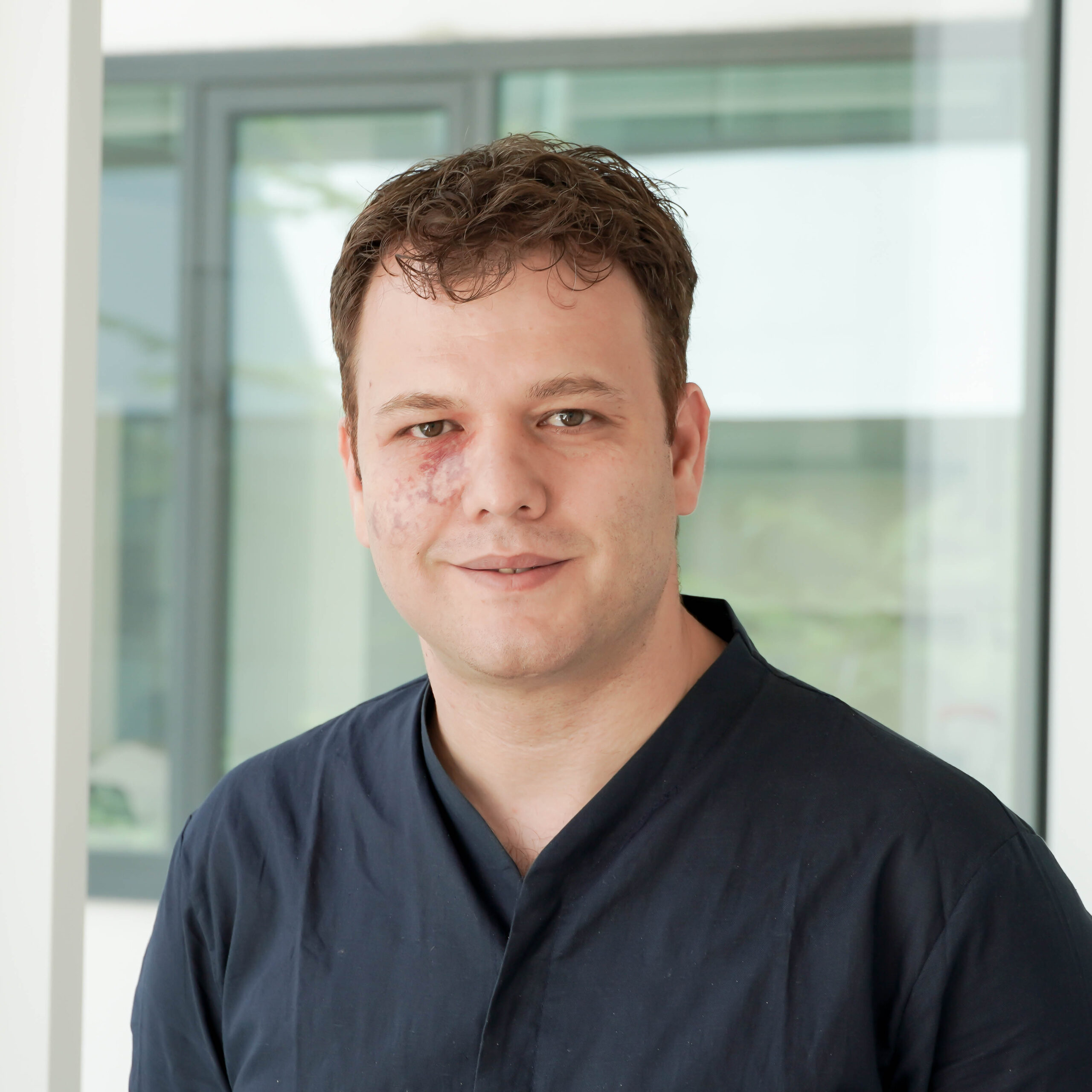
Özgün Gökçe
Institute for Stroke and Dementia Research (ISD), Klinikum der Universität München, Ludwig Maximilian University of Munich, Munich, Germany

Özgün Gökçe
Institute for Stroke and Dementia Research (ISD), Klinikum der Universität München, Ludwig Maximilian University of Munich, Munich, Germany
Title
Single-cell and spatial transcriptomics characterization of the mouse white-matter reveals adaptive immune system as driver of white matter aging.
Abstract
A hallmark of nervous system aging is a decline of white matter volume and function, but the underlying mechanisms leading to white matter pathology are unknown. Using spatial transcriptomics and scRNA-seq, we found that microglia and oligodendrocyte identities show age-related alterations in white matter. To further characterised these cell responses, we developed Spatial Transcriptomics-correlated Electron Microscopy (STcEM) which correlates large-area scanning EM and multiplexed error-robust fluorescence in situ hybridization (MERFISH) and links transcriptional identities of single cells with ultrastructural data. In summary, we provide evidence that CD8+ T cell-induced interferon-responsive oligodendrocytes and microglia are important modifiers of white matter aging and likely be involved in neurodegenerative disorders.

Leontien van der Bent
uniQure biopharma B.V., NL
Dr. Leontien van der Bent is a Scientist CNS Disease Biology at uniQure. After obtaining her BSc and MSc Biology at Wageningen University (Wageningen, The Netherlands)... more

Marek Bartosovic
Department of Medical Biochemistry and Biophysics, Karolinska Institutet, Stockholm, Sweden
Dr. Marek Bartosovic studied biochemistry at the Comenius University in Bratislava, Slovakia. Then he did his PhD at the Masaryk University... more

